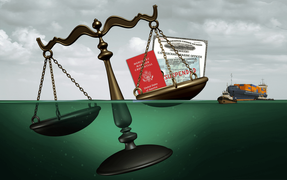Volvo Penta to Power Hurtigruten Hybrid Vessel
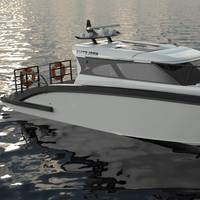
Hurtigruten Svalbard said it has teamed up with Volvo Penta to test a new hybrid vessel that will allow guests to experience the wonders of the Arctic archipelago without disturbing the habitat around them.The near-silent, Marell M15 cruiser called Kvitbjørn (polar bear in English) will allow for fully electric operation in the environmentally sensitive waters around Svalbard, which is hugely popular with nature-loving adventure travelers. Hurtigruten Svalbard plans to test the…
Earth, Wind & … Fire Protection
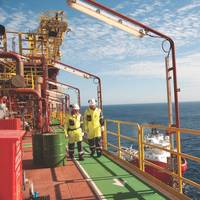
Three years ago coatings giant Jotun was buying up real estate for U.S. market access and location savings. The effort to get closer to its shipping and offshore customer base is still underway with research aimed at protecting client assets in frontier areas like the arctic. An R&D expansion at Flixborough in the U.K. and in the Arctic archipelago of Spitsbergen aims to make active the fire response of passive surface treatments. There’s a need to address fires in enclosed steel workplaces plus high-temperature hydrocarbon fires.
Ice Kings: Model Testing Ship-ice Interactions

Model testing ship-ice interactions in the St. In a cavernous room in the heart of a research center in St. John’s, Newfoundland at 8 am, the air temperature is -20 C while the water temperature is hovering at zero. National Research Council of Canada (NRC) staff are preparing the Ice Tank to test the integrity of a newly designed ship’s hull and propulsion system by subjecting a model to a battery of maneuvers and encounters with ice. One of the largest in the world, the Ice Tank is 90m long, 12m wide, and 3m deep.
Clean Arctic Alliance Praises Move to Phase out HFO Use
Responding to the December 20th joint statement from the United States and Canada, regarding development of a strategy to phase out their use of heavy fuel oil (HFO) from vessels operating in the Arctic, the Clean Arctic Alliance praised both Arctic nations for their ambitious action to rid the region of the dirtiest marine fuel. “The Clean Arctic Alliance applauds the commitment of President Obama and Prime Minister Trudeau to develop a concrete proposal to phase down HFO use in the Arctic”, said Clean Arctic Alliance advisor Dr Sian Prior. The US and Canada have also agreed to propose a plan for the next meeting of the International Maritime Organization’s Marine Environment Protection Committee (MEPC 71, July 2017) in order to implement the work necessary for a phase out.
Clean Arctic Alliance Response to Arctic HFO Ban
“The Clean Arctic Alliance welcomes AECO’s reconfirmation of its support for an international ban on heavy fuel oil in Arctic waters. AECO’s decision demonstrates the growing conviction within the shipping industry that the Arctic is simply too vulnerable and too fragile to allow the use of this dirtiest of fuels, and that HFO can no longer be considered an option for powering Arctic shipping in the future”. “By acknowledging the threats posed by spills and black carbon emissions from heavy fuel oil, the Arctic cruise industry has recognised that while it expands, it must phase out of this dirty fuel in order to protect the environment and human health, and safeguard coastal communities and food security”, continued Prior.
IMO Moves toward Phase out of HFO in the Arctic
The International Maritime Organization’s (IMO) Marine Environment Protection Committee (MEPC70) meeting brought progress by member countries toward a phase out of the use of heavy fuel oil (HFO) by vessels operating in the Arctic. Heavy fuel oil (HFO) breaks down extremely slowly in cold Arctic waters and is very difficult clean up in the event of a spill. While HFO powers some 44 percent of the ships currently operating in the Arctic, it accounts for more than 75 percent of the fuel onboard those ships, according to ICCT figures. HFO is already banned throughout Antarctica and in the national park waters around the Norwegian Arctic archipelago of Svalbard, leaving only a strictly regulated corridor for ships to access the islands.
First Commercial Cruise Will Sail Canada's Northwest Passage
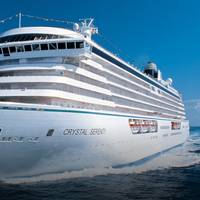
The first commercial cruise ship to sail through Canada's Northwest Passage was set to depart on Tuesday, part of a growing Arctic tourism industry spurred by rising temperatures and receding ice. The ship Crystal Serenity was to depart from Anchorage, Alaska, and cut through frigid northern waters before reaching New York in one month, according to a schedule from its American operator, Crystal Cruises. The route was first navigated more than a century ago by Norwegian explorer Roald Amundsen, but has been ice-free only in recent years.
China to Use Arctic Shipping Route
China plans to make use of Arctic sea route for its shipping to shorten the distance by 30 per cent compared to the ocean passages traditionally used to connect the northern Atlantic and Pacific oceans through Panama Canal. Chinese ships will navigate the Arctic via a Northwest Passage route that will be 30 per cent shorter than the ocean passages, official media here reported. “Once this route is commonly used, it will directly change global maritime transportation and have a profound influence on international trade, the world economy, capital flow and resource exploitation,” said Liu Pengfei, the ministry’s spokesman, at a news briefing.
Arctic Ice 'Too Thick' for Shipping Route
Sea ice in the Arctic is still too thick for Northwest Passage commercial shipping route in spite of warming temperatures. This is according to new research from York University. Despite climate change, Arctic sea ice remains too thick and treacherous, says the study, “Ice Thickness in the Northwest Passage,” published in the journal Geophysical Research Letters on September 25, 2015. Scientists with York University carried out electromagnetic ice thickness surveys during April and May in 2011 and 2015 to measure the thickness of sea ice over the Northwest Passage — “a system of gulfs, straits, sounds, and channels in the Canadian Arctic Archipelago connecting the Beaufort Sea in the west with Baffin Bay in the east,” according to researchers.
Polar Code Afoot

The IMO is on the verge of adopting the Polar Code, something that is important and long overdue. The International Maritime Organization (IMO), a specialized agency of the United Nations, is on the verge of adopting the Polar Code. When implemented, it will establish the first mandatory rules for operation of commercial vessels in polar waters. This important step is long overdue. On 18 January 2010, the IMO adopted voluntary guidelines for ships operating in polar waters (Res. A.1024).
Warming Aids Arctic Economies, but Short of 'Cold Rush'

Climate change is aiding shipping, fisheries and tourism in the Arctic but the economic gains fall short of a "cold rush" for an icy region where temperatures are rising twice as fast as the world average. A first cruise ship will travel the icy Northwest Passage north of Canada in 2016, Iceland has unilaterally set itself mackerel quotas as stocks shift north and Greenland is experimenting with crops such as tomatoes. Yet businesses, including oil and gas companies or mining firms looking north, face risks including that permafrost will thaw and ruin ice roads, buildings and pipelines.
Arctic Taskings for the Coast Guard
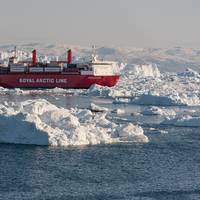
On January 30, 2014, the White House released the Implementation Plan for the National Strategy for the Arctic Region. The purpose of the Implementation Plan is to put flesh on the bones of the May 10, 2013 National Strategy for the Arctic Region. The National Strategy had identified three lines of effort to address challenges posed by the changing Arctic environment. The Implementation Plan sets forth the methodology, process, and approach for executing the Strategy. Most importantly…
Northern Sea Route Traffic to be Joined by Russian Navy

Two vessel groups from Russia’s Northern Fleet will be sailing Arctic waters during the busiest season for commercial shipping along the Northern Sea Route reports the 'Barents Observer'. Citing Commander Vladimir Korolev's press statement Barents Observer reports that the Russian Navy plans to send a detachment of the fleet’s combat ships led by the nuclear-powered missile cruiser “Pyotr Velily” to eastern regions of the Arctic Ocean". Another vessel group will sail to the archipelago Franz Josef Land…
Law of the Sea Treaty Heads Arctic Challenges for U.S.
The melting polar icecap is presenting both opportunities and challenges for the United States and other Arctic nations, as well as other nations with interests in the region. Arctic ice cover has declined consistently over the past few decades. Increased accessibility, dubbed an “emerging maritime frontier” by U.S. Coast Guard Commandant Admiral Robert J. Papp, Jr., presents a host of opportunities for oil and gas development, fishing, tourism, and transportation. It also creates myriad challenges related to Arctic governance, marine safety, indigenous populations, scientific research, and environmental stewardship. This article reviews the state of play regarding claims to the Arctic and the U.S.


